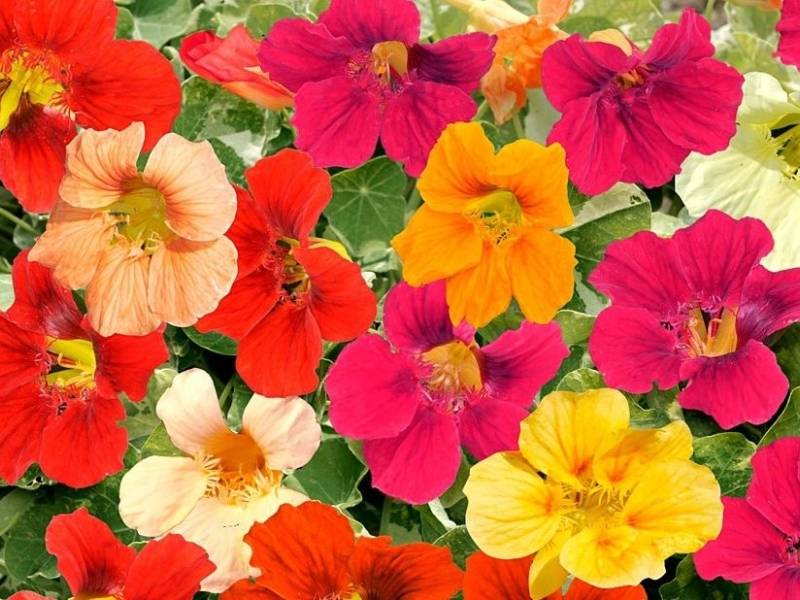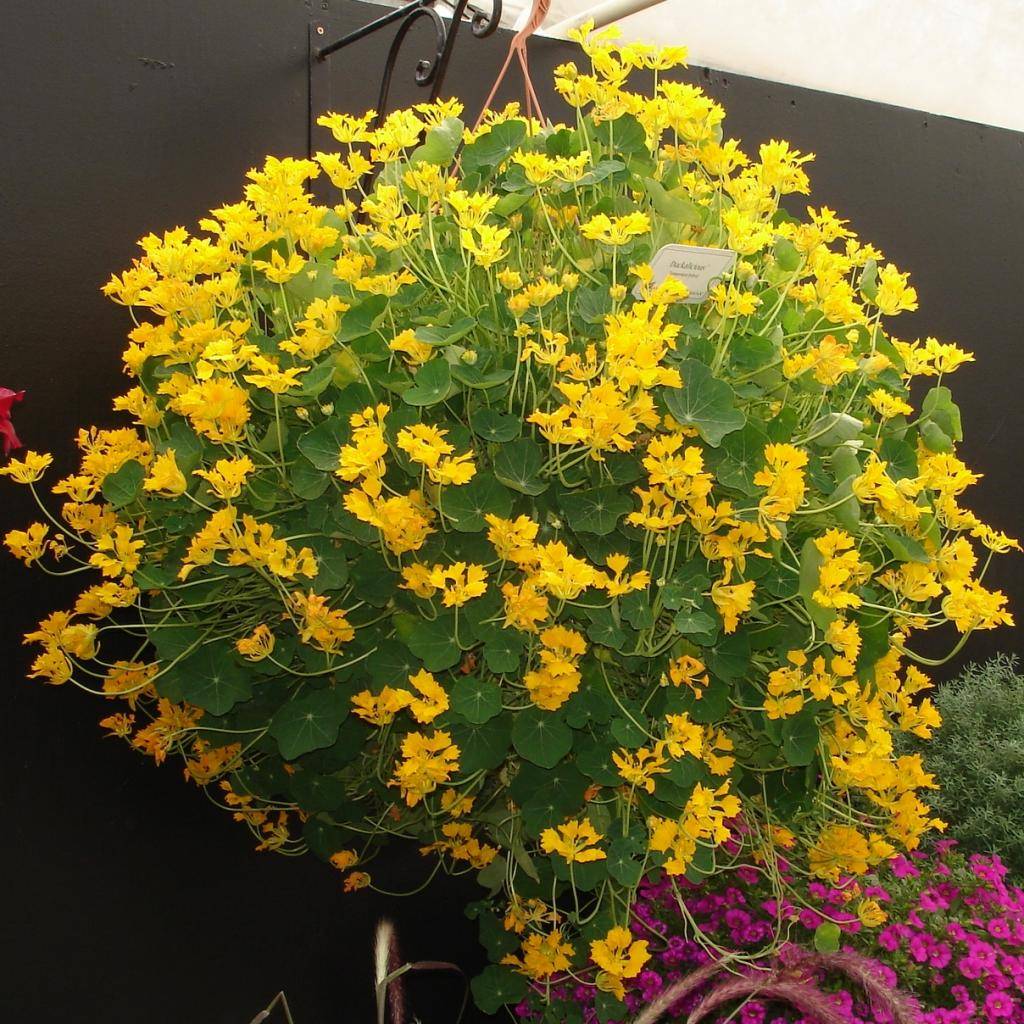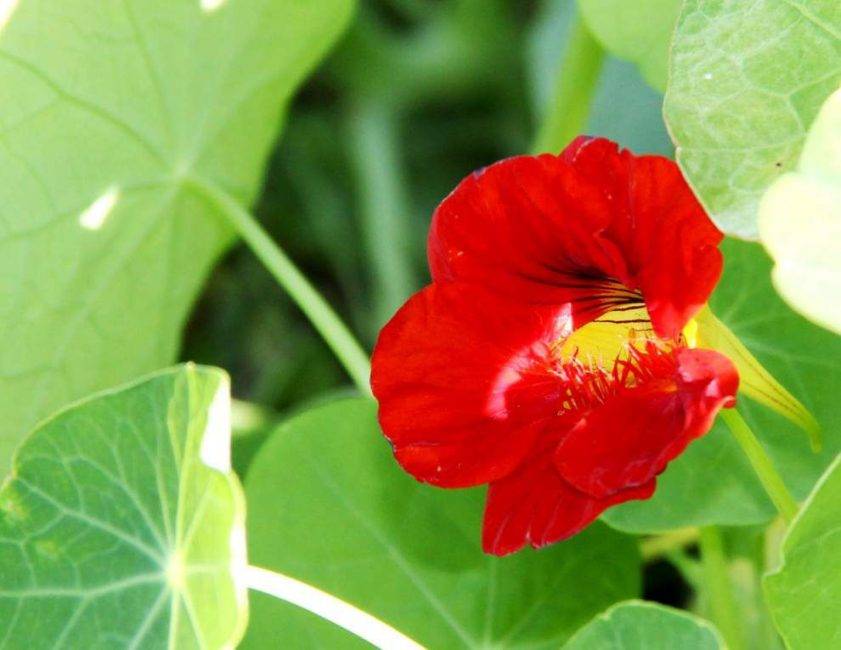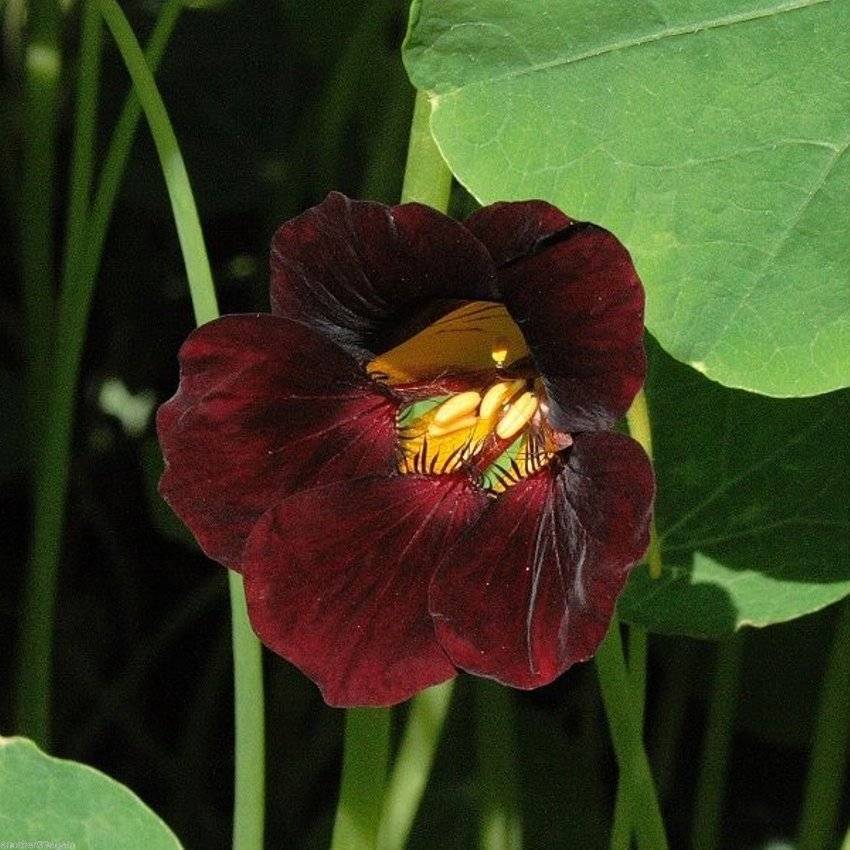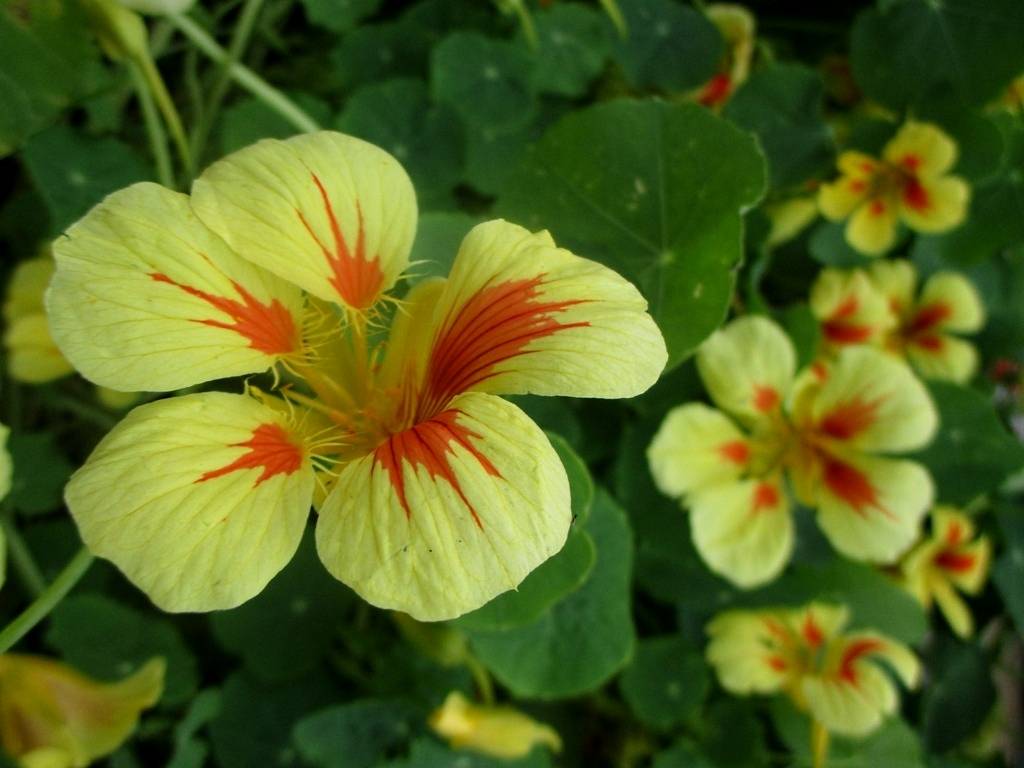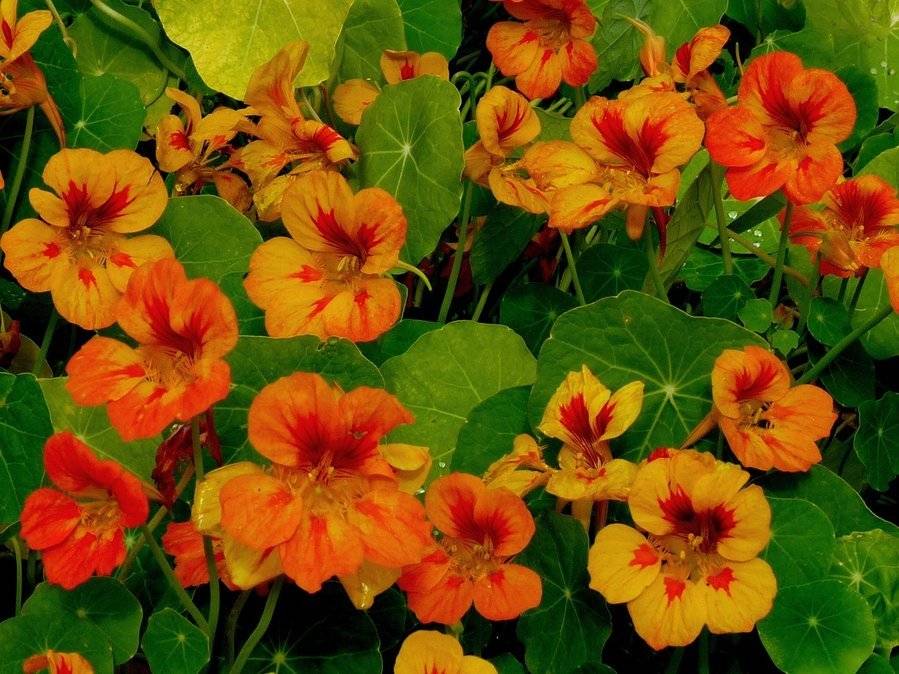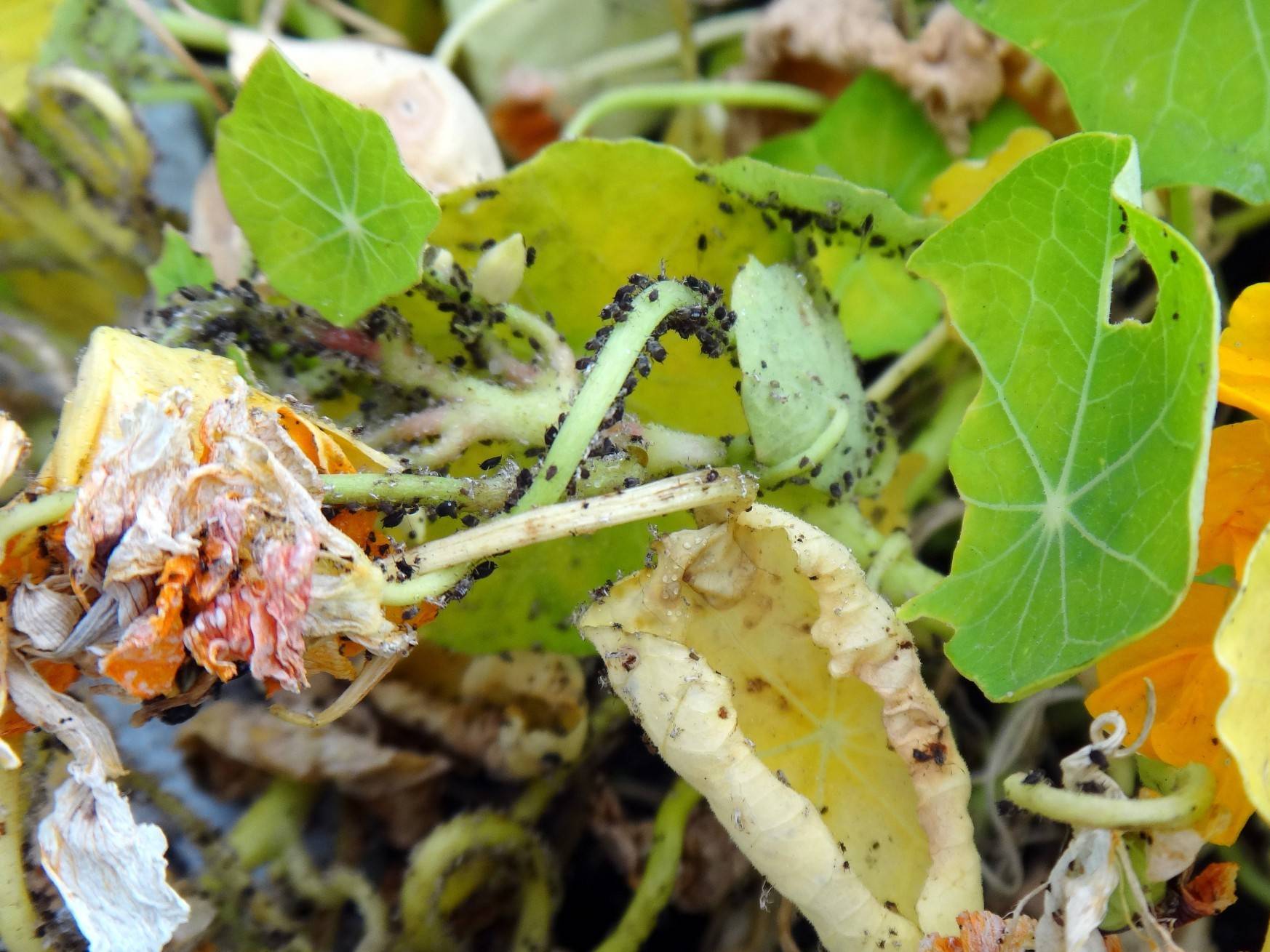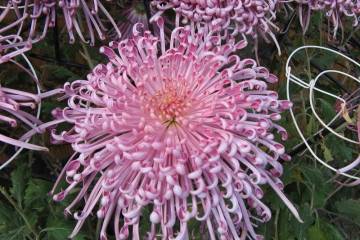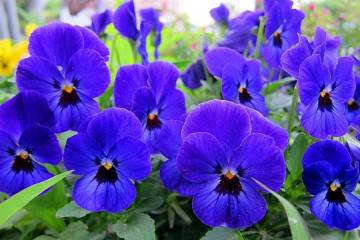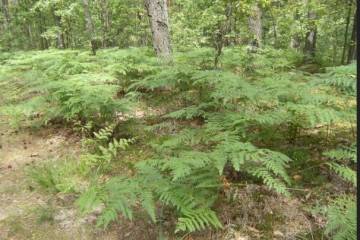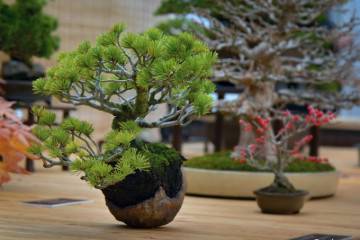Nasturtium flower - classification of perennial varieties
Content:
Nasturtium is a flower that began its journey across the planet from the United States. Wherever she appeared, she gained steady popularity. Breeders all over the planet are eagerly engaged in the development of more and more new varieties of culture. The flower does not require any special care. Along with decorative qualities, it has good medicinal properties. Another name is associated with the shape of the bud, which resembles a hood. Why they named the flower capuchin. The scientific name of the culture "Tropaeolum" was introduced by the scientist K. Linnaeus.
What does a curly nasturtium flower look like?
Nasturtium has perennial and annual varieties. This is mainly a plant with liana-like stems. Sometimes you can find semi-shrub species.
What family does it belong to
Nasturtium flowers are part of the Nasturtium family. More than 90 species and varieties have been studied. Despite the fact that they come from warm countries, they have perfectly taken root on the territory of Russia.
Briefly about the history of appearance
European countries met with nasturtium at the end of the 16th century. For a long time it was called "Indian watercress" because of the similarity of tastes with the edible herb of the same name. For a long time, both plants were named the same. A little later, K. Linnaeus gave the name Tropaeolum.
Other popular names of culture:
- capuchin watercress;
- colored salad;
- krasul;
- Spanish and Indian watercress.
Plant characteristics
Most often, the leaves of the culture are thyroid with smooth edges. There are also finger-separated ones. The buds are five-petal, single-row or double. The petals close in the center, forming a funnel-shaped tube. The colors are very different, but more often shades of red, yellow and red. Connoisseurs note the delicate aroma. The ripe fruit consists of three lobes. Bean-like seeds ripen in each of them.
Useful properties of nasturtium
Interestingly, nasturtium leaves are edible. They completely replace watercress, they are used in soups, they decorate ready-made dishes. The fruits are also edible. They are pickled and used instead of capers. Ground seeds are a good substitute for black pepper. All parts of the plant are edible except for the roots.
The plant is also used for treatment. It contains a lot of vitamin C. For all diseases with a deficiency of this vitamin, you can use a decoction of the plant or eat it fresh.
Proven benefits for:
- scurvy;
- constipation;
- diseases of the bronchi.
Classification of popular types of nasturtium
At home, culture is represented by perennials. In mid-latitudes, it can only be grown as an annual. There are many popular varieties, but the most popular ones can be counted 15-20 pcs. The most famous species are only five.
Foreign nasturtium, or Canary
Canarian climbing nasturtium is native to South America. In the description, creeping shoots up to 3.5-4 m long are noted. They can be used to decorate gazebos. Dissolves buds in June and blooms until frost. Small yellow buds. The petals are wavy. There are 5 of them in total, but seven-lobed ones are very rare.
Large nasturtium
Strongly branched bushes. Long lashes are rather fragile. In length they reach 2.5-3 m. Therefore, how to tie up climbing nasturtium, you need to think in advance. It is better to use wide soft bands.
In large nasturtium, there are erect varieties. They are low, only 0.7 m tall. It blooms in early summer and continues to delight the eye until frost. It reproduces by self-seeding. In spring, seedlings appear without human intervention.
The leaves are large, rounded. The underside of the leaf is pearl gray. Single-row buds of various shades.
Cultural nasturtium
This species includes hybrids of large nasturtium and shield-bearing nasturtium. Representatives of the species are:
- compact up to 0.5 m in height;
- creeping with long (about 4 m) lashes;
- miniature height no more than 20 cm.
Small nasturtium
Small bushes with thin grooved stems only 30-35 cm high. Small thyroid leaves are attached to very long thin petioles. Yellow buds are small, asymmetrical (three upper petals are pointed). It also blooms from June to October.
Shield-bearing nasturtium
A semi-shrub with long, fragile lashes. The four-meter stems are deep green in color. The thyroid leaves are also the same color. The petals of the buds are claret-red. The vegetative period is May-October. The seeds have time to ripen.
The cultivars that are most popular with horticulturists
Nasturtium species are classified into many varieties. Many are well known to amateur flower growers.
Alaska
Nasturtium Alaska is a small variety. It is distinguished from others by the originality of the color of the leaf plate. White splashes of various shapes are scattered on a deep green background. The buds are reddish-red.
Maiden beauty
Nasturtium Maiden Beauty is an annual. Compact bush, no more than 0.4 m in height. It is indifferent to the quality of the soil, but it needs good lighting. The variety is thermophilic. Differs in long wild flowering.
Canary
The Canary Creeper variety differs in the shape of the buds. The two upper petals are larger and directed upward, and the three lower ones are knitted together. Therefore, the yellow petals of the flower resemble the wings of a canary. Hence the name.
Vesuvius
Vesuvius is a stunted nasturtium. This is a miniature lush bush. Leaves are dense emerald. Red splashes on salmon pink petals.
Cherry rose
This nasturtium has red-pink buds.
Black truffle
The variety differs in the spherical shape of the bush. Its height does not exceed 0.4 m. The leaf plate is green with a gray tint. Wine red buds.
Mahogany
The variety is medium-sized. Stems are no longer than 1.5 m. Double buds are dark red. The diameter of the flower is about 7 cm.
Maiskaya
May nasturtium blooms with salmon-colored double flowers.
Silk road
This is terry nasturtium. The leaves of the variety are emerald. Fragrant flowers come in a variety of colors. Flowering is very abundant from the beginning of summer until frost.
Cherry rose
Cherry rose has bright red double flowers. The bush itself is no more than 30 cm tall.
Black Lady (Black Velvet)
The black velvet is distinguished by its almost black buds. On close inspection, they are dark red. The bush grows up to 30 cm tall.
Moonlight
Moonlight has two-meter creeping whips. The flowers are pale yellow, single-row. The leaves are rounded green.
Golden Globe
A spherical small bush with a height of 20-25 cm. The diameter of the bush is about 35-40 cm. The leaves are round green. Golden double flowers. Bud diameter 60-65 mm.
Gleming Mahagani
Low-growing bush. Its height is a little more than 35 cm. Terry flowers are deep red in color.
ladybug
The ladybug has apricot-colored buds. In the center of the flower there are dark brown spots.
Salmon Baby
Salmon Baby is known for its multi-layered salmon flowers.
Peach Melba
Peach Melbu is distinguished by the color of the bud. There are red markings in the center of the cream flower.
King Theodore
The King Theodor variety has a deep red petals.
Planting in pots, flowerpots and pots
For growing nasturtium on a balcony in pots and flowerpots, it is recommended to use loamy, sandy loam soil. You can just buy ready-made soil.
Curly nasturtium is commonly used for potting. Place nasturtium in a flowerpot or pot in a sunny, windless place. In the shade or partial shade, green mass will grow to the detriment of flowering.
Fertilizing a flower is required at least three times a month. Better yet, feed weekly. The plant should be watered as the soil dries up, but it is better to organize a drip system. Water must be used warm, separated.
Features of care in the garden and on the balcony
Caring for pot and garden nasturtium consists of watering, feeding and loosening.
Nasturtium in the garden needs:
- illuminated place;
- loose soil;
- watering;
- top dressing.
It is recommended to plant seedlings in peat cups. After planting, it is advisable to mulch.
Abundant flowering is achieved by adding potassium and phosphorus. Withered buds should be removed in a timely manner.
Timely watering and feeding are very important for potted nasturtium. In hot weather you need to water every day. Top dressing is applied once a week. It is advisable to put flowerpots in sunny places.
In all cases, it is recommended to protect the plants from cold drafts.
When and how it blooms
The first buds appear at the end of May. Blooms very profusely until frost, usually until mid-October. For the southern regions, this period is noticeably longer. Nasturtium can bloom at the end of April.
Types of flowers
Flowers of nasturtium are solitary. They grow from the leaf sinuses. The petals are rounded. The diameter of the bud does not exceed 7 cm. The color of the petals is different. There are shades of red, red, yellow. There are varieties with white, lilac and pink buds. Most of the petals are single-row, but there are also cultivated double varieties.
Flower shapes
The flower consists of five (rarely 7) petals. Their junction is somewhat elongated, so the general appearance resembles a gramophone.
Flowering period
The culture comes into bloom very quickly. When planted in May, the first buds appear in June. The end of flowering is limited by the ambient temperature. The development of a flower is stopped only by frosts.
Changes in care during flowering
Lush bloom depends on the preparatory procedures. Initially, the flower must be planted in fertile soil and well mulched.When nasturtium is in bloom, it is dangerous to disturb it for loosening. Creeping stems can be easily injured. Mulch will help maintain a loose soil structure. Removing weeds will be easy too.
If these rules are followed during flowering, all that remains is to ensure sufficient watering with the addition of fertilizer. For a potted bush, it will be enough to feed every few months. Planting should be watered every 2-3 days, and flowering plants in pots every day.
To preserve decorativeness, wilted buds should be regularly removed. In addition, by tying a fetus, they pull food on themselves.
Possible growing problems
Nasturtium has a fairly strong immunity. Trouble with her almost never arises. But like all living things, it can also become the object of attention of unwanted guests, although it is planted to scare off some pests on the backyard.
Pests
The most dangerous for nasturtium are aphids, cabbage moths, spider mites and whites. Aphids are especially devastating. The pest settles on the wrong side of the leaf and sucks out the juices. Soon the leaf turns yellow and dries up. If you do not take action, the flower will be destroyed in a few days. Ordinary ash helps in the fight against aphids. It should be sprinkled with plants after every rain.
Spider mites are difficult to spot right away. He's too small. But over time, its presence will be understood by the cobwebs on the underside of the sheet plate. The tick does not tolerate alcohol. A one-time treatment will help them get rid of the pest.
A lot of harm is done to the flower by the whitewash larva. To scare off the butterfly itself means not to let it lay eggs, the infusion of tomato tops will help.
Diseases
Often, nasturtium is also affected by diseases. For example, bacterial wilting can lead to the death of a bush.
She can also pick up:
- gray rot;
- root rot;
- brown spot;
- black spot.
Signs of improper care
Improper care of nasturtium will change its appearance. Whatever the reason, the leaves will lose their turgor and become lighter. The buds will not open completely, they will fall off faster. The color of the petals will become paler. Violent flowering can not be expected.
Use in landscape design
When using culture in landscape design, you need to build on the type of plant. They are:
- ground cover;
- bush;
- climbing.
Based on these qualities, nasturtium is used for landscaping gazebos and open verandas. The latter can be used to disguise unsightly outbuildings.
The abundance of varieties of nasturtium can satisfy the needs of any gardener. Ease of care makes it possible to breed a culture even for beginners. A little care will allow you to enjoy the long flowering of the plant, as nasturtium blooms until the very frost.
